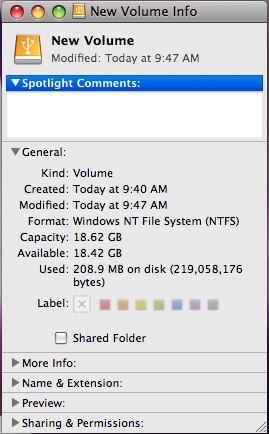Hard Drives
Solid State Drives
Hard Drives
Solid State Drives
Twitter Facebook Google Plus Linked in
Error -50 and -1309
This error is commonly due to a file system problem on the target (destination) drive. It isn't indicative of a failure, but rather, an incompatibility. Mac's native file systems (HFS+) can store more complicated files than other file systems (like FAT32 or NTFS.) Common causes are:
To solve the problem, the drive must be put into a compatible format to store the files that cause the error.
If this is a drive that connects via Ethernet, the second cause is more likely. As the drive can not be reformatted, the file name must be changed to be compatible.
Error -61
This error is usually indicative of a file permission error. Apple defines it as: "wrPermErr Write permissions error; Not a publisher." This means that the file operation (either delete or write) was attempted, but was unsuccessful because of an "Access Denied" type response from the computer. Usually, this is from one of these causes:
In most cases, the best first step is to ensure it is formatted with a compatible file system, as formatting is the most common cause of the problem. Windows NTFS format will cause this error when writing or deleting is attempted. Verify the file system with the procedure below.

A menu like this will appear. This must not say NTFS next to "Format". If it does, the drive must be changed to a compatible format. Also, verify the number to the right of "Available" is sufficient to hold the files.
If that looks correct, Format the drive in Disk Utility.
If Disk Utility gives an error message instead of formatting the drive, there is likely a user account problem.
Error -1407
Deleting a file from a hard drive can occasionally result in error code -1407. This error can be caused by a variety of sources, but the method to fix it is simple.
This error can mean a program has a file "Locked", but isn't reporting properly about it. Because of this, begin by closing all open programs, then try to delete the file again.
If that doesn't immediately solve the problem, eject the drive by clicking the eject button in a Finder window.
The eject button is the icon in the right side of the circled area. Unplug the drive from the computer when the entry disappears from the Finder window. Leave the drive disconnected for a few minutes, then reconnect it.
It should now allow the file to be deleted.